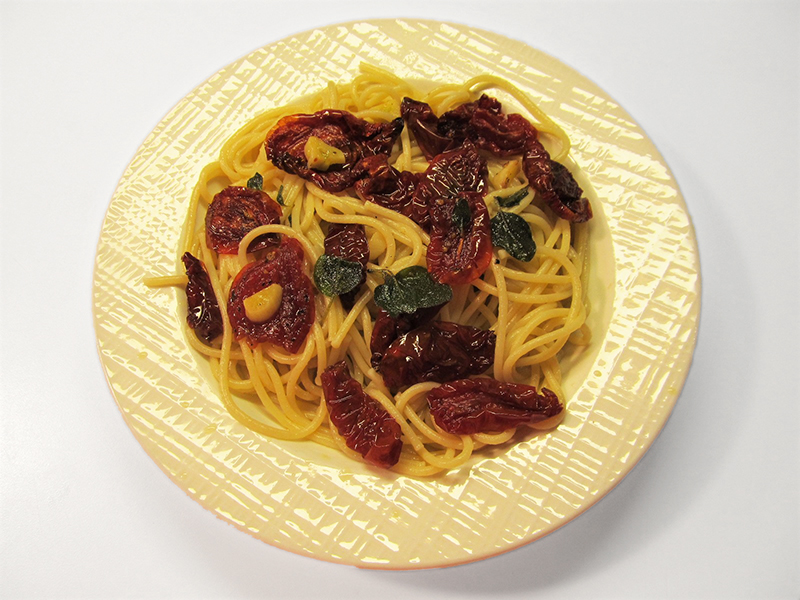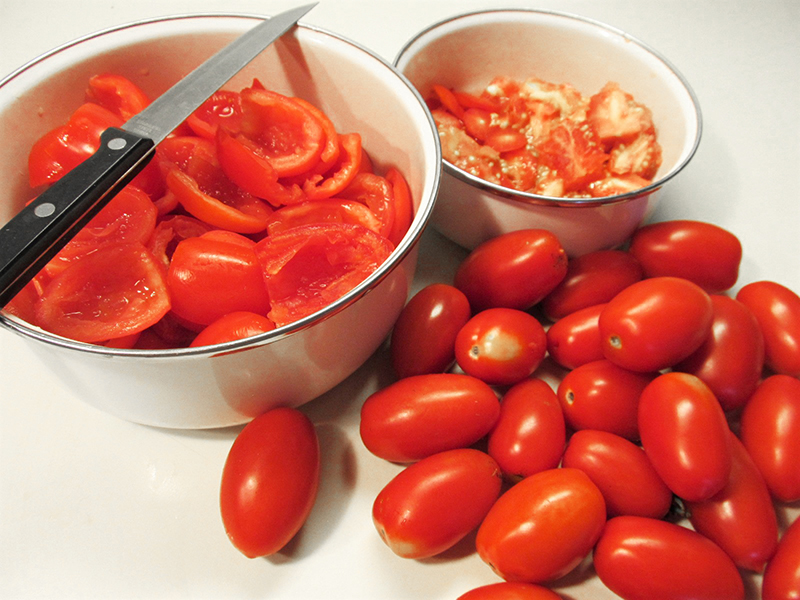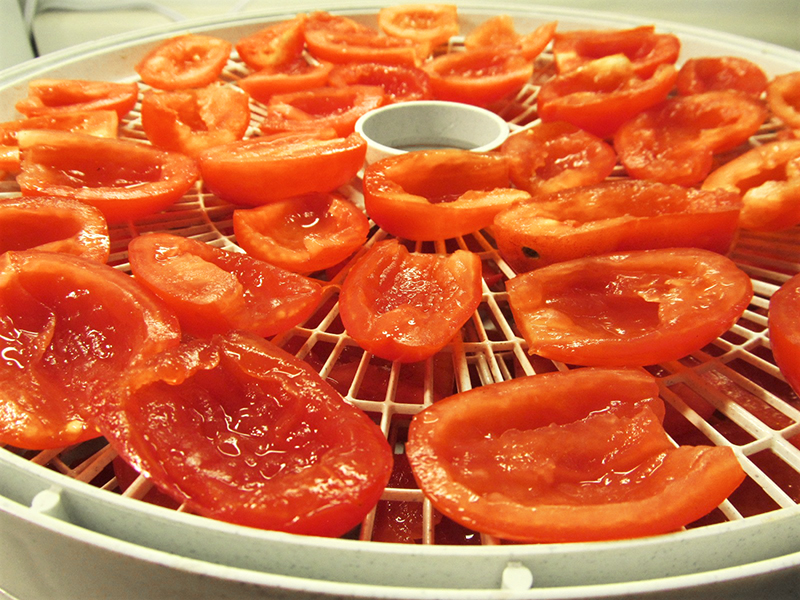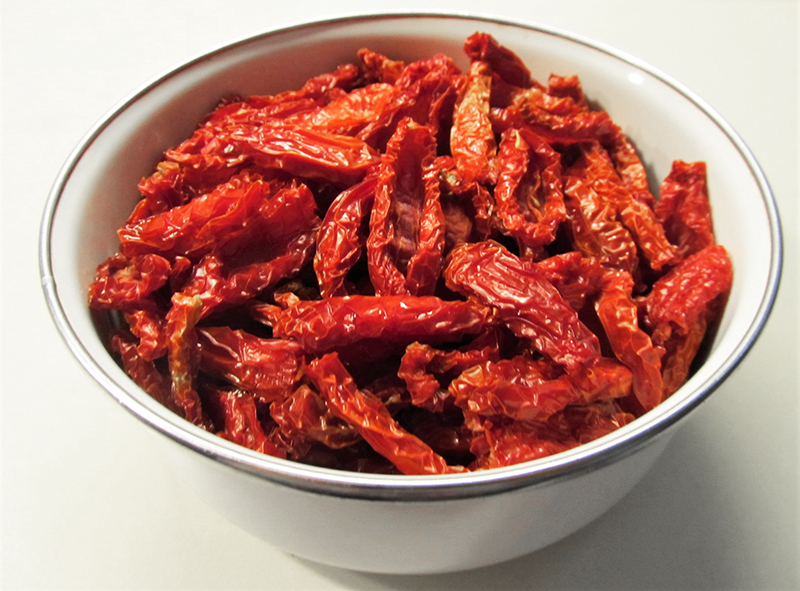As you who follow my food rants know, I’m a big fan of the dehydrator. In mid-September mine has one major task—drying tomatoes. This year the fruit of choice is the Juliet grape tomato. A bounty of them will provide the special touch to the soups, stews, and pasta dishes of winter.

This is my first experience with the Juliet, and it is perfect for drying. About two-three inches long, this little tomato that resembles a Roma plum has many of the same characteristics, including firm, thick-walled flesh.
Just about any tomato can be used, however, as long as the pieces are consistent in size, so that they will dry fairly evenly. Skins can be removed or not. For this batch I chose not. Too time-consuming with small tomatoes. If you choose to, cut an X on the bottom of the tomato, just deep enough to penetrate the skin, and put into boiling water. After 20-30 seconds, remove with a slotted spoon and immerse in ice water. A little effort and a knife will loosen the skin, which you can then slip off.
For the Juliets, I sliced the long way and scooped out the seeds and liquid with a spoon. If the tomatoes are larger, cut them again into smaller pieces. Arrange cut sides up on dehydrator trays that have been wiped with an olive oil-moistened paper towel to prevent sticking. Leave a small space between them so that they don’t touch.

Set the dehydrator to the vegetable/fruit setting, 135 to 140 degrees and check occasionally over the eight to twelve hours the process will take. I usually rotate trays top to bottom twice or more for uniform drying.

Your finished product will be shriveled, dried fruits that are no longer tacky. Store in freezer bags or other containers in the refrigerator or freezer.

Rehydrating can be accomplished in several ways. Tomatoes can be added to any slow-cooking dish that contains liquid, like soup or stew. They can be soaked in a liquid such as stock, or water. I like to put some in a jar and cover with olive oil. In a couple of days, the oil is infused with the tomato flavor and anything else you have added, including garlic or spices. They and their warmed oil turn a simple plate of pasta into a gourmet dish.
The tomatoes in oil will last for weeks in the refrigerator, and in their dried state frozen or in a bag in the crisper drawer for a year with no issues. I throw the bowl of seeds into the compost, which guarantees that volunteer tomato plants will pop up there next season.



![Berkshire County Courthouse, photo by Alexius Horatius; [CC BY-SA 3.0] via Wikimedia Commons.](https://www.greylockglass.com/wp-content/uploads/2019/05/Berkshire_County_Courthouse_2_sm-1024x773.jpg)




